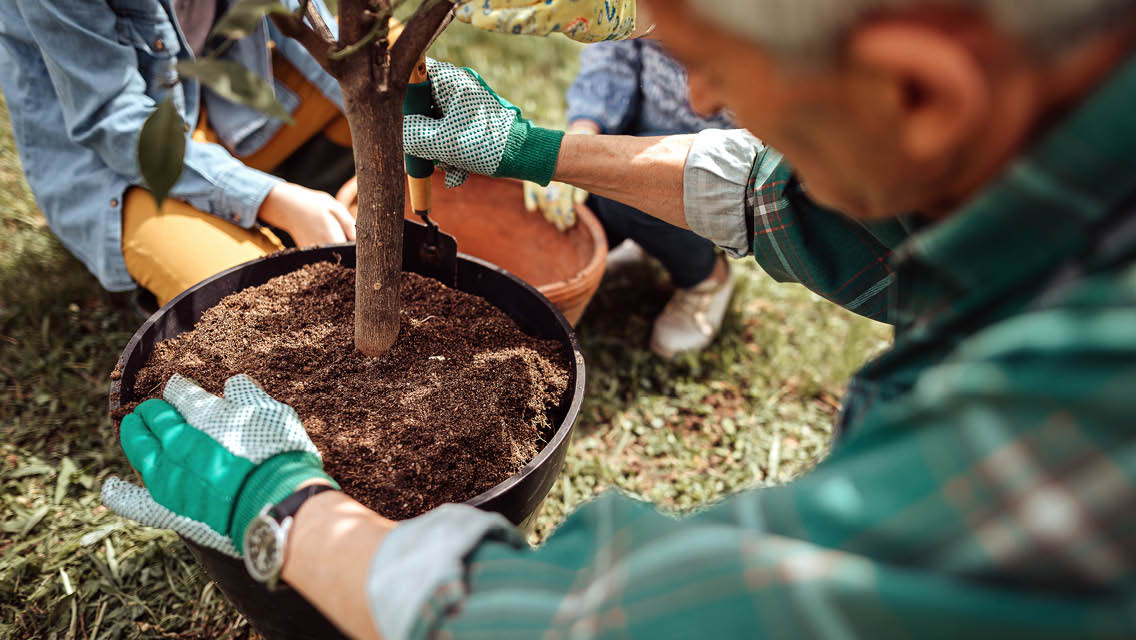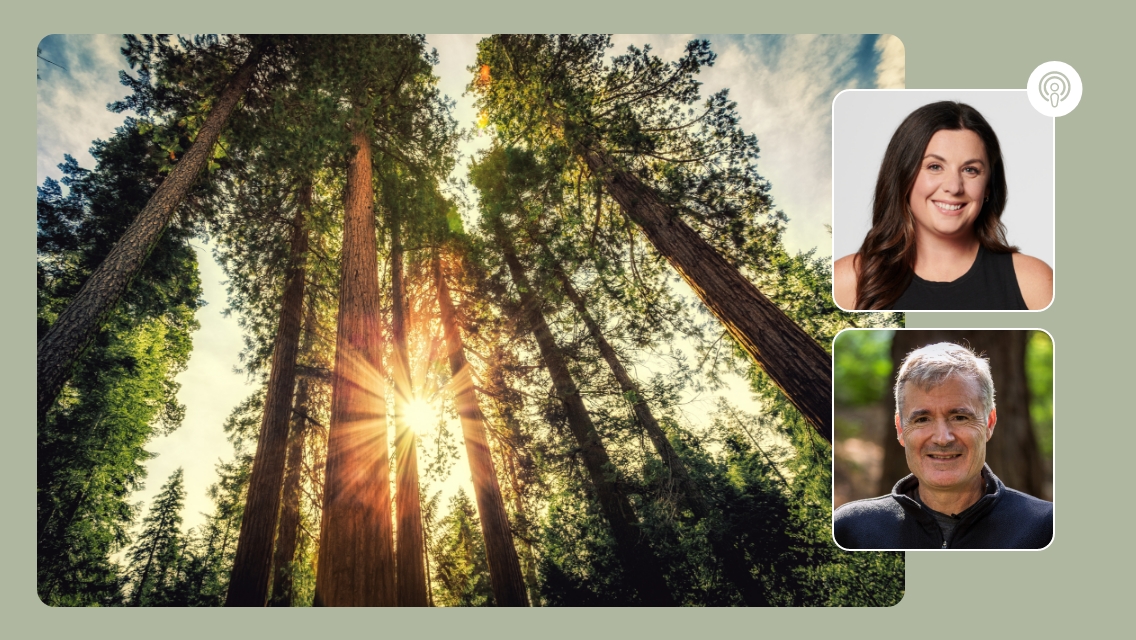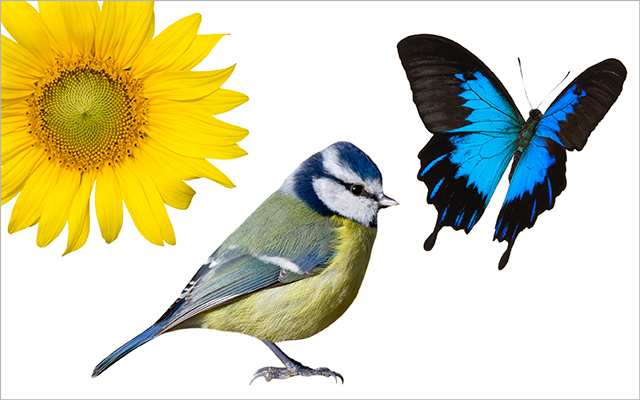There’s a proverb that says, “The best time to plant a tree is 20 years ago; the second-best time is today.”
All you need is a shovel and a little vision. Many trees grow to be large in both height and breadth, so envision the tree 30 to 50 years in the future. That will help you choose the type of tree you buy and where you plant it. For the best outcomes, consider the following factors.
1) Think Ahead
The trees you plant will become major elements in your landscape. Keep the mature size in mind and make sure the tree you select will be in scale with your home. Don’t make the mistake of planting a tiny oak seedling 10 feet from your front door or a basswood under a power line. The canopy of a large tree will complement a two-story home, but many shade trees are too large for small lots and one-story homes. There are many trees in the 40-foot-range that provide ample shade and are in better scale with homes. These smaller species are also good choices if you will be planting under an obstruction such as a power line or near a sidewalk or driveway.
Another thing to keep in mind is species diversity. You should avoid planting all one species, especially if there are already a lot of this species in your neighborhood. Serious disease and insect problems on trees, which can be devastating to neighborhoods, are often associated with over-planting of a species.
Certain trees are more tolerant of typical urban conditions than others. They’re able to handle atmospheric pollutants from industry and cars, compacted soil, poor drainage, lighting, and salt spray from snow plows. If you will be facing any of these conditions, look for a tree that can tolerate these situations. Some trees suitable for street use are ginkgo, Kentucky coffee tree, some oaks, and lindens. Some trees can be messy, dropping leaves, flowers, fruits, or twigs. They may be fine for yard trees, but you wouldn’t want to plant one over your deck or driveway.
Lastly, there are some fast-growing trees that will fill in the space quickly. However, these plants almost all have problems. They are weak-wooded, meaning they will drop lots of branches during windstorms and often even topple over. They also tend to drop lots of litter and have numerous pest problems. These trees are better suited to use as screening and windbreaks rather than front yards. In general, it is the slower-growing trees that make better long-term investments. If sited correctly, watered regularly, mulched, and kept pest-free, slow growers often respond with faster than average growth.
2) Grow Native
If you don’t want to drastically change the soil, you should select a tree based on your soil conditions. If possible, select a species that is native in your area. Many native trees make good shade trees. They are well adapted to your climate and tend to be more disease- and insect-resistant than exotics. They also provide more habitat for native beneficial insects, birds, and butterflies than nonnative trees do. Some good North American native trees are red maple, river birch, Eastern redbud, Kentucky coffee tree, ironwood, pin oak, swamp white oak, Northern pin oak, Chinkapin oak, and basswood. Even though they are too tall for many urban situations, consider native oaks whenever possible. No other group of plants supports more species of butterflies, and therefore birds, than these stately trees.
3) Plan the Location
All large trees will provide shade, but you’ll get the most summer shade and winter sun from a broad-canopied deciduous tree (trees that lose their leaves in winter). The shade of a large tree can reduce the temperature up to 10 degrees, and these effects can be felt inside a house as well. Studies show that a few well-placed shade trees can reduce cooling costs by as much as 35 percent. For maximum cooling, trees should be placed on the southwest or west side of the area or building to be shaded.
Tall evergreens should not be planted on the south side of a building, where they will keep the sun from warming the house in winter.
4) Planting and Caring for Your Tree
Planting a tree is a long-term investment, but one that returns a great deal of satisfaction and value. Starting with a healthy, nicely shaped seedling will go a long way in improving your long-term success. The tree should have a gentle taper to the trunk, well-spaced branches on all sides, and a single dominant branch, which will be the “leader.”
You want a single-leadered tree not only because it will look better, but also because it is healthier. Most trees that have a double leader will eventually split because of the weak V-shaped crotch. If you do end up with a double-leadered tree, prune out the weaker leader. It may look funny at first, but the other leader will soon straighten and become the single dominant leader.
The trickiest part of buying a new tree is often getting it home safely. Plan ahead and bring something to protect the interior of your vehicle and to stabilize the tree so it doesn’t move around on the ride home. Be sure to only lift the plant by the container or root ball, not the trunk. If the tree is leafed out, wrap it in burlap or plastic to reduce water loss. If you are using an open-bed truck, water the plant before loading to reduce water loss and add weight. Place the plant or plants at the front of the bed and drive slowly to minimize windburn of the foliage.
Like shrubs, trees are available bare-root, in containers, and balled-and-burlapped. A fourth way to plant a tree is with a tree spade, which gives you a larger tree faster, but it is usually much more expensive. Bare-root trees must be planted in spring as soon as the soil can be worked. Balled-and-burlapped, container-grown, and tree-spade trees can be planted anytime but the hottest days of summer. Spring is still the best time for planting, however. The fewer or smaller the leaves are, the faster the tree will recover from transplanting. Plant the tree at the same depth it was growing at in the container or burlap wrap. Bare-root trees should be planted so that the crown is level with the ground level.
Deep, thorough watering is very important to help young trees get off to a strong start. Place a hose at the base of the tree and let the water trickle out for several hours, if possible. Allow the top 2 inches of soil to dry out before watering again. The tree should receive good soakings for the first growing season and possibly the second. Once established, most trees can tolerate some dry periods, but don’t hesitate to water as needed, especially in sandy soils. Always saturate the soil thoroughly with each watering to encourage deep rooting.
A 2- to 3-inch layer of organic mulch such as wood chips, shredded bark, or pine needles will keep weeds down, conserve soil moisture, stabilize the soil temperature, and protect the trunk from damage from the lawnmower. Plastic mulch is not recommended.
In most cases, newly planted trees should not be staked. It is better to allow them a little movement to encourage stronger trunks and healthy root systems. However, trees planted on a very windy, exposed site may benefit from staking for their first season or two, especially if they are top-heavy.
String wire through a section of garden hose to protect the bark from injury. The wire should hold the tree firmly without putting undue pressure on the trunk. The staked tree should still be able to sway somewhat in the wind.
Most landscape trees require regular pruning, not only to keep them looking good but also to keep them healthy. Start training young trees right after planting to encourage strong, healthy mature trees that will stand up to strong winds and storms. A modest investment of time in the first five years will pay off greatly down the road. It costs a lot of money to have a professional arborist come in and trim a large tree that has been neglected. If you make proper pruning cuts right above collar and prune at the right time of year, you do not need to use a wound dressing. In fact, covering a wound can do more harm than good. The exception is if you need to prune a tree at the wrong time of the year and it is susceptible to attack from a major insect pest, such as oak wilt.
This was excerpted from “Make the World a Better Place: Plant a Tree!” which was published in Experience Life magazine.





This Post Has 0 Comments